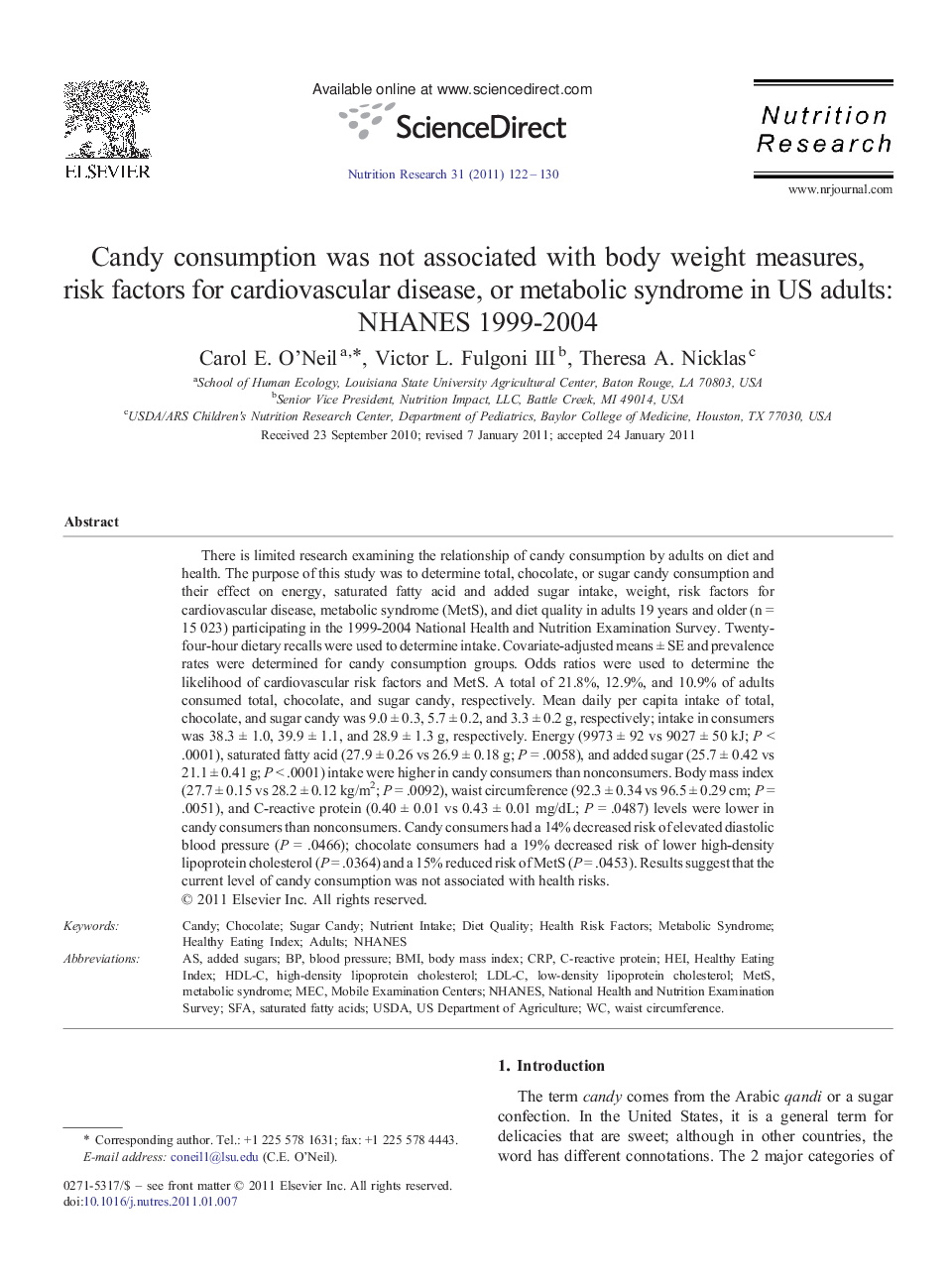| کد مقاله | کد نشریه | سال انتشار | مقاله انگلیسی | نسخه تمام متن |
|---|---|---|---|---|
| 5904573 | 1158013 | 2011 | 9 صفحه PDF | دانلود رایگان |

There is limited research examining the relationship of candy consumption by adults on diet and health. The purpose of this study was to determine total, chocolate, or sugar candy consumption and their effect on energy, saturated fatty acid and added sugar intake, weight, risk factors for cardiovascular disease, metabolic syndrome (MetS), and diet quality in adults 19 years and older (n = 15 023) participating in the 1999-2004 National Health and Nutrition Examination Survey. Twenty-four-hour dietary recalls were used to determine intake. Covariate-adjusted means ± SE and prevalence rates were determined for candy consumption groups. Odds ratios were used to determine the likelihood of cardiovascular risk factors and MetS. A total of 21.8%, 12.9%, and 10.9% of adults consumed total, chocolate, and sugar candy, respectively. Mean daily per capita intake of total, chocolate, and sugar candy was 9.0 ± 0.3, 5.7 ± 0.2, and 3.3 ± 0.2 g, respectively; intake in consumers was 38.3 ± 1.0, 39.9 ± 1.1, and 28.9 ± 1.3 g, respectively. Energy (9973 ± 92 vs 9027 ± 50 kJ; P < .0001), saturated fatty acid (27.9 ± 0.26 vs 26.9 ± 0.18 g; P = .0058), and added sugar (25.7 ± 0.42 vs 21.1 ± 0.41 g; P < .0001) intake were higher in candy consumers than nonconsumers. Body mass index (27.7 ± 0.15 vs 28.2 ± 0.12 kg/m2; P = .0092), waist circumference (92.3 ± 0.34 vs 96.5 ± 0.29 cm; P = .0051), and C-reactive protein (0.40 ± 0.01 vs 0.43 ± 0.01 mg/dL; P = .0487) levels were lower in candy consumers than nonconsumers. Candy consumers had a 14% decreased risk of elevated diastolic blood pressure (P = .0466); chocolate consumers had a 19% decreased risk of lower high-density lipoprotein cholesterol (P = .0364) and a 15% reduced risk of MetS (P = .0453). Results suggest that the current level of candy consumption was not associated with health risks.
Journal: Nutrition Research - Volume 31, Issue 2, February 2011, Pages 122-130